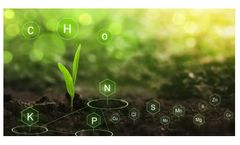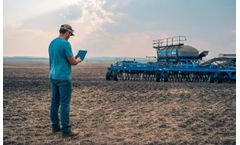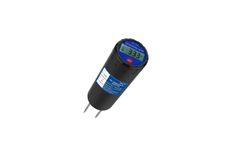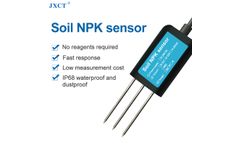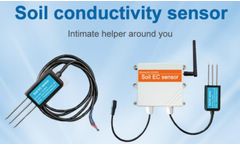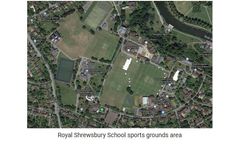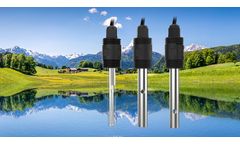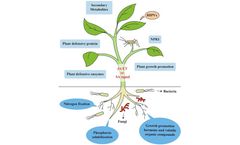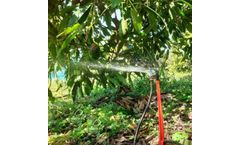Refine by
Soil Salinity Articles & Analysis
48 articles found
The new European Union (EU) Soil Monitoring Law aims to address this by ensuring healthy soils across all member states by 2050. ...
Placing fertilizer within the seed row has been long-standing practice for many farmers across the prairies. Having those nutrients close to the seed makes it easily accessible by the plant, and can help the crop out of the ground and into the sun. Potash fertilizers and other nutrients, such as phosphate, are immobile fertilizers, meaning they don’t travel more than a half-inch through ...
During drought or dry conditions, salinity and pH levels can change quickly in the soil. While the forecast shouldn’t entirely dictate how you manage your farm, understanding and performing the best farming practices when adding seed-placed nutrients can help save your yields when the rain fails to ...
Soil sensors are like tiny eyes and ears, constantly monitoring the hidden world beneath our feet. They whisper stories of water content, nutrient levels, temperature fluctuations and even soil salinity. This nuanced understanding allows farmers to tailor their practices to the specific needs of each micro-district in the field. ...
This paper explores the application of soil sensors in monitoring soil pH and salinity, their applications in various fields, and the benefits they provide in precision agriculture.Soil pH is a measure of soil acidity or alkalinity. ...
ByJXCT
Importance of Measuring Soil EC: Assessing Soil Salinity: Soil EC meters play a crucial role in assessing soil salinity levels. Excessive salt accumulation in the soil can negatively impact plant growth and productivity. By measuring soil EC, farmers can identify ...
Soil NPK sensors are devices that measure the levels of nitrogen, phosphorus, and potassium (NPK) in the soil. ...
Soil NPK sensors are devices that measure the levels of nitrogen, phosphorus, and potassium (NPK) in the soil. ...
Soil EC sensors provide real-time data on soil salinity levels, enabling farmers to monitor and manage soil health effectively. Benefits of Soil EC Sensors: a. Salinity Management: Soil EC sensors help farmers identify areas with high salinity levels in their ...
Managing sports turf in a school environment, has a whole extra set of influencing factors, that make maintenance decisions even more difficult. The ability to use intelligent solutions for maintaining optimal turf conditions regardless of limited budgets and increasing demands for sustainable maintenance has proved influential to a forward thinking turf professional, who wants to stay ahead ...
As the demand for freshstrawberries has increased over the years, so have the costs of producing theseberries. Due to this increase in demand and expense, many strawberry growershave begun looking at different strategies for growing strawberries more ...
Inefficient irrigation practices lead to water waste, reduced crop productivity, and soil salinity. Therefore, agricultural water management strategies must focus on maximizing irrigation efficiency while minimizing water, energy, and fertilizer use. ...
Abiotic stresses: SA impacts on several abiotic stresses including cold tolerance, temperature extremes, drought tolerance, tolerance to UV radiation, and soil salinity tolerance. It also Induces resistance to disease stress. ...
On-farm weather stations and soil moisture probes take the guesswork out of seeding plans and execution As the 2023 seeding season is fast approaching, why not end the soil moisture guessing game on your farm? Especially when you have technology available to inform weather-related planning and crop management decisions. Precision crop management tools, including on-farm weather stations and soil ...
What is a soil tensimeter? Soil tensimeter uses the principle of negative pressure to measure soil moisture and studies soil moisture movement from the perspective of energy. ...
This is especially important for indoor operations using growing media with little or no natural fertility. soil salinity sensor can help people monitor well.For routine measurements, it is impractical to actually measure salt content in irrigated water or soil. ...
In the past few decades, agricultural land has been largely lost, and increased salinity in soils around the world has received much attention. Nowadays, nearly 8% of the world's arable land can no longer be used for crop cultivation due to salt pollution, and more than half of the world's countries are affected. ...
In both furrow and drip plots, root densities were greatest and most water uptake occurred in the upper 3 ½feet of soil. SOIL SALINITY - DRIP vs. FURROW Accumulations of salt within the root–zone of alfalfa can be a significant problem with the 800 to 900 ppm total salts in the water from the Colorado River. ...
NPK compound fertilizer production line manufacturers often use sulfur to reduce soil pH value and improve saline alkali soil in agriculture. However, the use of sulfur as nutrient fertilizer in agricultural production has not attracted people's attention until recently. ...
Finally, its fruit oil is widely used in medicine and its seeds for the preparation of poultry feed. HERBAL CHARACTERISTICS AND SOIL CLIMATE CONDITIONS The Avocado tree is a large tree, 5-15m high, while in some cases it reaches 20m. ...

